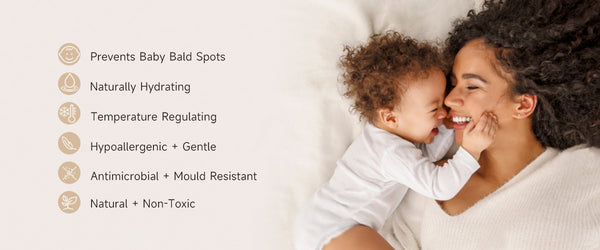After you read a lot of parenting books, watch a lot of parenting videos from experts. You think you've mastered the baby sleep thing when you eliminate the babies' bassinets, moses baskets or co-sleeping chairs. We understand you. Now that you're ready, will their sleeping patterns be disrupted if you switch to a larger sleeping area, a tiny bassinet, or a crib? How can you tell if they're prepared? You're not alone if you're asking yourself these questions. Continue reading for our best advice on how to ease the transition for both you and your kid.
When determining if you are prepared to move your infant from the bassinet to the crib, there are a few things to take into account.
- Age of your infant - Babies often move into cribs between the ages of 3 and 6 months. It could be time to get your kid a bigger bed or bassinet if you start to realize that their current one is getting too small. You must decide for yourself whether some newborns grow more quickly than others.
- The growth and mobility of your infant - If your infant is shifting positions, fidgeting, or rolling over in the bassinet, it could be time to switch to a larger crib. Be mindful that an active baby can be unsafe in a small sleeping area.

Create a safe sleeping environment
Make sure you've gone through the checklist for giving your infant a safe sleep environment in the new crib before the actual shift.
- A firm crib mattress
- A crib deep enough to stop your child from climbing out as they become mobile
- A bed without any crib bumpers, additional padding, or more blankets
- A room with the right temperature for sleep (18-21 degrees Celsius)
- A smoke-free setting

Transition gently and make the change over time
It may take some time for your infant to feel secure in their sleep surroundings. For a few weeks, let your baby to nap in their new crib. Then, gradually move them back to sleeping in their crib at night. You can gradually move your kid out of the crib and keep them there permanently after a few weeks. If you have the room, you can place the crib in your room to begin with. Once the baby is cozy in the crib, you can relocate him or her to a new nursery or room.
If your baby needs you to help them fall asleep in their new area, you may also try staying in the room a little longer during the early stages of the transition until they do. Then, gradually cut back on this time.
Add some comfortable bedding
It is best to recreate your baby's sleeping environment as closely as you can, which entails using the same bedding, comforters, and toys. Your baby can self-soothe and unwind more readily by experiencing familiar odors and sensations, which helps them feel safe and slip into a light sleep.
If you've switched to silk, you may use our silk crib cover or silk crib sheet in your child's new crib or infant crib to keep their skin feeling the same way consistently while promoting self-soothing.
My daughter enjoys how the fitted sheets feel against her skin. She sleeps incredibly well, thus we think the product is great! What a fantastic item. -Janet
Since using this mattress cover, my daughter's baldness has begun to regrow, and she adores the way it feels. I'm eager to place additional orders! - Aryana
Before putting your baby in a crib, you can expose them to a quilt and place it in their new sleeping space to help them create a positive association with sleep that will make them feel more comfortable and at ease there.
Be consistent
Babies enjoy routine, as we've previously stated and will do so again. Babies find comfort in routines because they know what to expect each day, particularly at night. Stick to what you and your infant find to be effective. Maintain the same nighttime routine for your child; the only difference is that the bassinet/sync bed should be replaced with a crib. When it's time for sleep, this will make your infant feel more at ease and relaxed.
There is no specific length of time for the changeover procedure, if that answers your question. It can take a few days, a few weeks, or even a few months. It's crucial to keep in mind that it should be a progressive process and get better every day. Be ready for some of the unavoidable crying and fussiness as your baby gets used to his new sleeping surroundings. This could be a learning adjustment for you as well, so be patient and kind to yourself.
You may track your baby's transition while encouraging them to learn to fall asleep on their own with the aid of baby monitors and sound machines, which can also help nervous parents and your baby's early adjustment.


